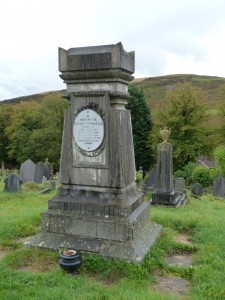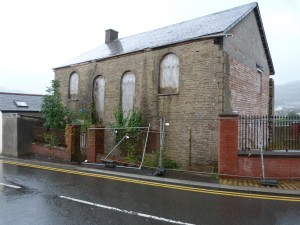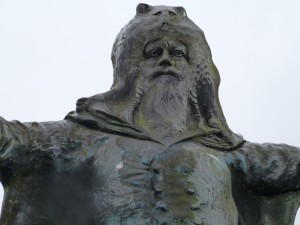We had a very good research visit to the Rhondda collecting photos for articles to appear in Welsh Country Magazine. We went to Trealaw to find the memorial to the mine owner Daniel Thomas who was killed whilst involved in the rescue attempt following an explosion in the Naval Colliery in Penygraig in January 1884. Here is the impressively restored memorial to those who died.

Daniel Thomas himself is buried in the sadly neglected Independent Chapel on a busy junction in Cymmer. His tomb is round the back.
You might be interested to learn that the story of Daniel Thomas features in my new book, Grave Tales From Wales. You can find a link to a page about the book in the menu or by clicking here
Alternatively you can go straight to the How to Buy page to order a copy. Again, either find How to Buy in the menu or click here

We also went to Llantrisant to take pictures of the statue of Dr William Price, self-proclaimed arch druid and full-time eccentric who was influential in the legalisation of cremation when he burnt the body of his infant son in 1884. The statue certainly reflects the strange nature of the man. It is a fox skin he has on his head, in case you were wondering.

Hi Geoff, excellent material and research. I also am a researcher, of all things Rhondda related.
Please correct me if I am wrong, but the wonderful memorial to Daniel Thomas was placed in Trealaw Cemetery at the area where the casualties of the 1879 DinasColliery explosion were buried (All in section L of the cemetery).
Initially, the owner of Dinas Colliery at the time, Colonel Hunt, intended a memorial stone to those that died, but as it was, Daniel Thomas died in 1884 whilst attempting to rescue the miners involved in the Penygraig disaster. A memorial to both him, and the casualties of the 1879 explosion at Dinas Colliery was erected, not as you say above the Tynewydd disaster.
The monument is therefore surrounded in the very area where many of the victims had been buried. Some of the others had been buried in Tonyrefail.